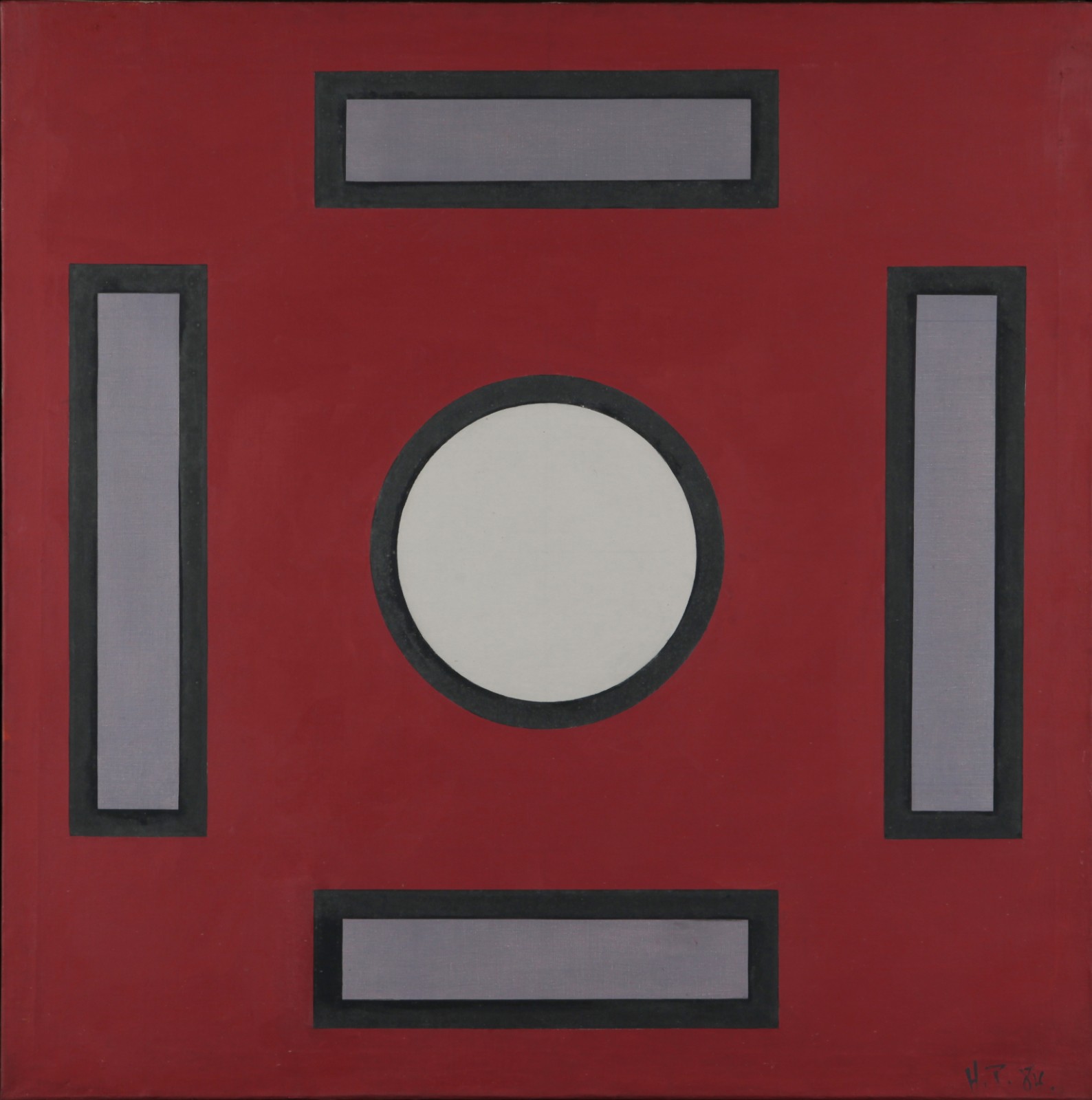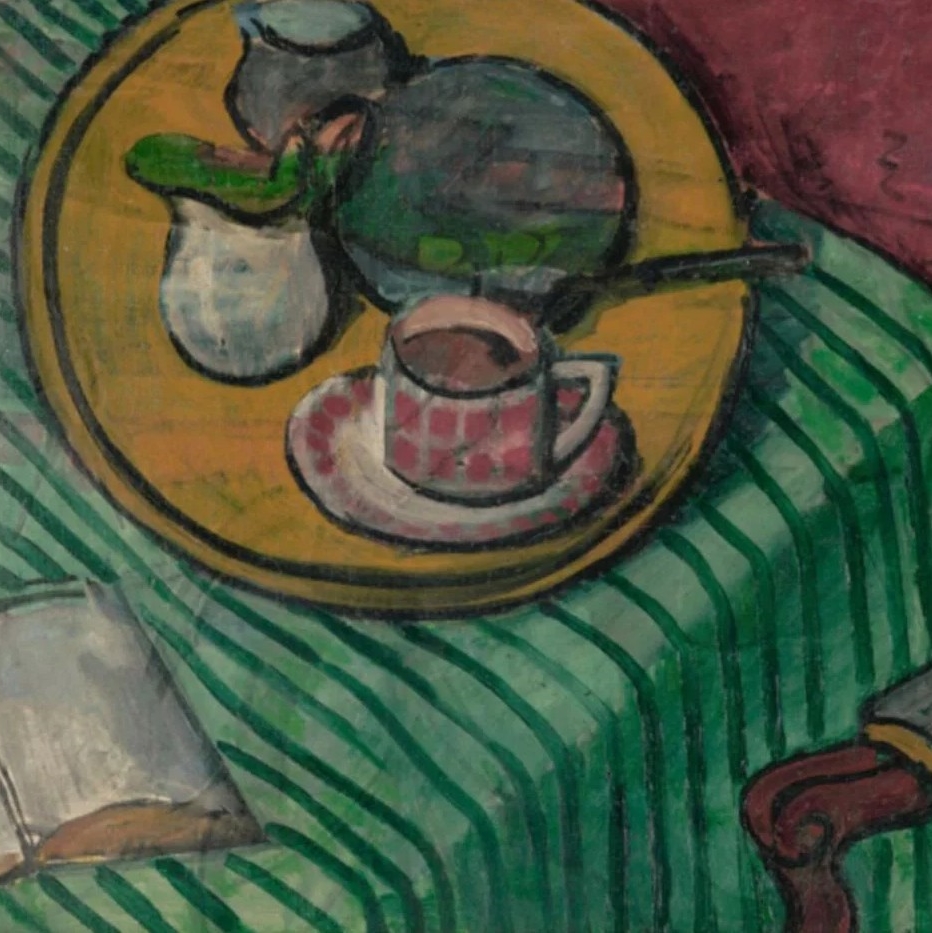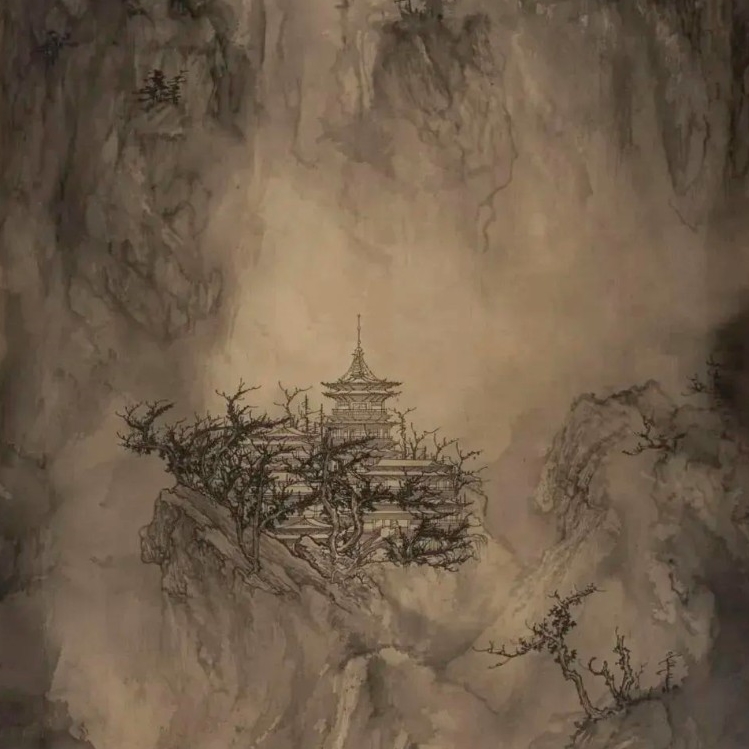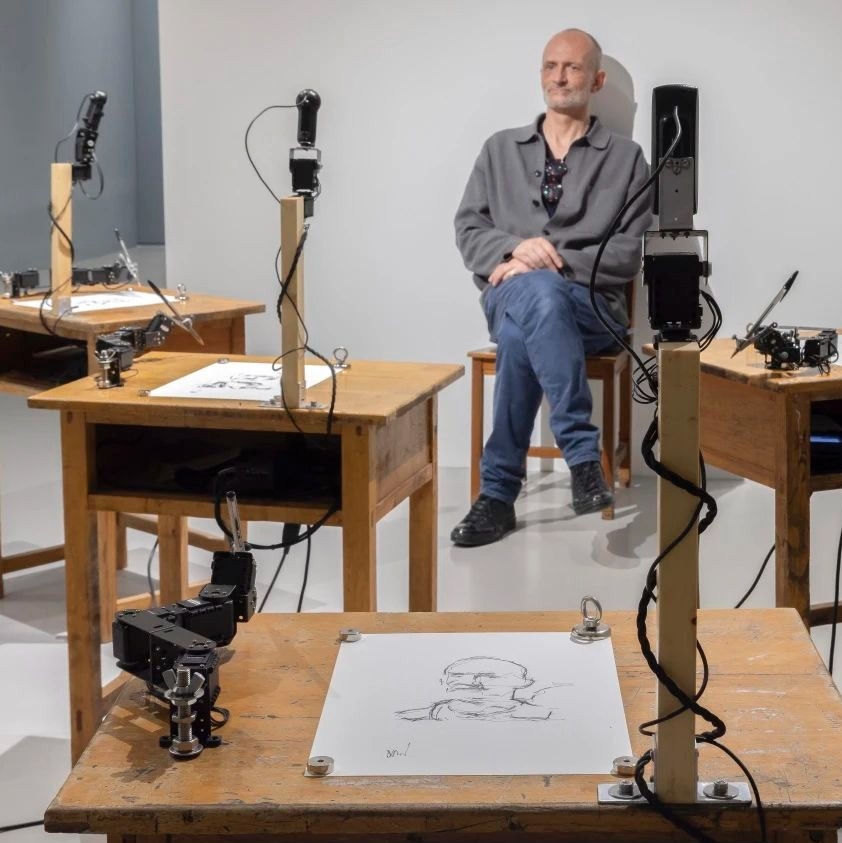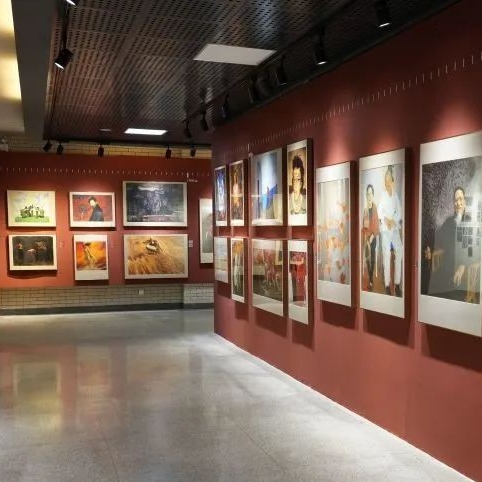
Installation View of “Huang Rui: Ways of Abstraction”
Huang Rui has been active at the forefront of Chinese contemporary art as an independent artist and instigator since the late 1970s. “The Stars Art Group” that he jointly initiated and his endeavor in the establishment of 798 Art District during this century left unique traces in the history of Chinese contemporary art. “Huang Rui: Ways of Abstraction”, the latest and largest solo show featuring Huang Rui’s work over the past decade was unveiled at UCCA Center for Contemporary Art on September 25, 2021. Compared with the various public actions that Huang Rui is more familiar with, this exhibition is themed on the rarely seen abstract paintings he has been engaged in for forty years, and it also includes dozens of sculptures and installations. It systematically conveys the important clues and explores the language of abstraction and East Asia from the beginning of his career to the present day.

Huang Rui, The Black Semicircle, 2020, 128 x 172.5 cm. Image courtesy of the artist.
By the end of the 1970s, artists such as Picasso and Cézanne had exerted greater influence among Chinese youths, social changes also stimulated young artists to understand, learn and absorb the modern art trends in the western world which were unknown to them. In the “French 19th Century Rural Landscape Painting Exhibition” held at the National Art Museum of China in March 1978, what attracted Huang Rui were the works by Van Gogh and Cézanne, while the latter was still regarded as a negative model in the academies of fine arts in China.
Huang Rui, Infinite Space, 1979, oil on canvas, 55 x 74 cm. Image courtesy of the artist.
At the first “Stars Art Exhibition” in September 1979, Huang Rui had already exhibited his abstract paintings. The first part of the exhibition “Early Abstraction” included Infinite Space (1979) which was hung on the fence of the National Art Museum of China at that time. The broken color blocks in the painting clearly show the influence of Cubism. Infinite Space is the first truly abstract painting by Huang Rui, and it is also one of the first group of abstract works publicly displayed during that era. For the young Huang Rui, among countless avant-garde artists in the past, abstraction was a new art form, a way to gain unprecedented freedom. In the later Rethinking the Classics and Learning from Daqing, in the collage processing of manuscripts, newspapers and other texts, traces of American modern art like those by Rauschenberg can be seen. It did not just foreshadow the artist’s subsequent shift in styles, but it is also a vivid testimony of China’s entry into the transition period of the artistic movement and social transformations. People were constantly exploring new ideas, new concepts and new expressions.

Huang Rui, Learn from Daqing, 1981, oil on canvas with newspaper collage, 30.5 x 20.5 cm. Image courtesy the artist.

Huang Rui, Space Structure 83-5, 1983, oil on canvas, 95 x 80 cm. Image courtesy of the artist.
The “Spatial Structure” series is based on the Siheyuan (Beijing courtyard) where Huang Rui grew up. With the acceleration of urban construction, the traditional courtyard houses began to experience new modernization challenges. Huang Rui simplified the building structure of the courtyard to a rectangle, and rebuilt the spiritual courtyard in pure colors. This abstract construction logic reminds people of some of Mondrian’s works in the United States.
Huang Rui, Space Structure 84-25, 1984, oil on canvas, 80 x 80 cm. Image courtesy of the artist.
In 1984, Huang Rui went to Japan. Since the end of the war, Japan has strengthened its ties with Western societies and actively built itself into a “modern country in East Asia.” At the same time, the collapse of militarist rule after the defeat also caused the Japanese to encounter a national identity crisis. With the rapid development of the “struggle for security procedure” and other social movements and the capitalist economy, Japanese modern art has gradually formed its own unique appearance. Within the artists, a group that has had an important influence is the Gutai Bijutsu Kyokai (Gutai Art Association) led by Yoshihara Jiro (1905-1972), which has been active since the 1950s, advocating that while learning Western avant-garde art forms, it should explore expressions with Japanese national cultural characteristics while paying attention to the spirituality that is dependent on specific material and behavior.
Huang Rui, Japan's Ten Best Dry Landscapes: Moonwatching in the Stone Courtyard (Ryōan-ji Temple), 2020, oil on canvas, 160 x 102 cm. Image courtesy of the artist.
Emphasizing independence, pursuing freedom, and encouraging innovation, the purpose of the Gutai group can be described as being like-minded with Huang Rui. Soon after arriving in Japan, Huang Rui was acquainted with Kazuo Shiraga (1912-2008), a former influential member of the Gutai group. Huang Rui felt that despite the language and experience difference, he still benefited a lot from the interaction with this senior artist. In addition, in the same period as the Gutai group, the Bokujin (People of the Sumi Ink) founded by Morita Shiryu and Inoue Yuichi set off a wave of avant-garde “Sho: (brush calligraphy). What’s interesting is that Kazuo Shiraga was attracted by the expressive power of oil paint in his early years, and turned from Japanese painting to oil painting, forming his own unique “foot painting”; Huang Rui was introduced by Kazuo Shiraga and others, therefore under the influence of avant-garde calligraphy, he returned to the traditional medium of ink and wash.

Huang Rui, Space Structure 85-15, 1985, oil on canvas, 44 x 60 cm. Courtesy 10 Chancery Lane Gallery. Image courtesy of the artist.

Huang Rui, Heaven, 2021, oil and jute on canvas, 200 x 200 cm. Image courtesy of the artist.
In Huang Rui’s ink and wash work, one can clearly see the influence of Gutai group and avant-garde calligraphy. These works have a different visual impact from the past, and this emphasis on natural energy may come from Kazuo Shiraga. Huang Rui has further matured his personal style in the process of absorbing Japanese culture. In the “Space” series, in the “Space Structure” series, the courtyard space has been transformed into a traditional Japanese house. After more refined subtraction, the thick black lines are no longer just the edge lines of the color blocks, but form a more flexible space like a barrier screen in a Japanese building. In Space Structure 85-15 (1985), although the black lines surround the entire edge of the picture, the entire picture does not appear to be closed because of this. On the contrary, the same barrier suggests a new space as in traditional Japanese indoor spaces, various walls, sliding doors and screens are highly mobile and can reorganize the entire space quickly and conveniently. This sensitivity to small-scale space constitutes an important concept “Ma”(間, the kanji represents a crucial concept in various Japanese practices including music and architecture, referring to notions of space and time between things, distance, pause, interruption, and relationship) in Japanese aesthetics. In Space (Recovery), this indication of sliding doors and panes is more obvious. The “Space” series connects the space inside and outside the painting through abstract forms. At the same time, this connection is different from the illusion space constructed in traditional realistic painting. Through the introduction of “Ma”, Huang Rui’s abstract paintings have completed the absorption and transformation of modernist concepts of Clement Greenberg and Michael Fried.
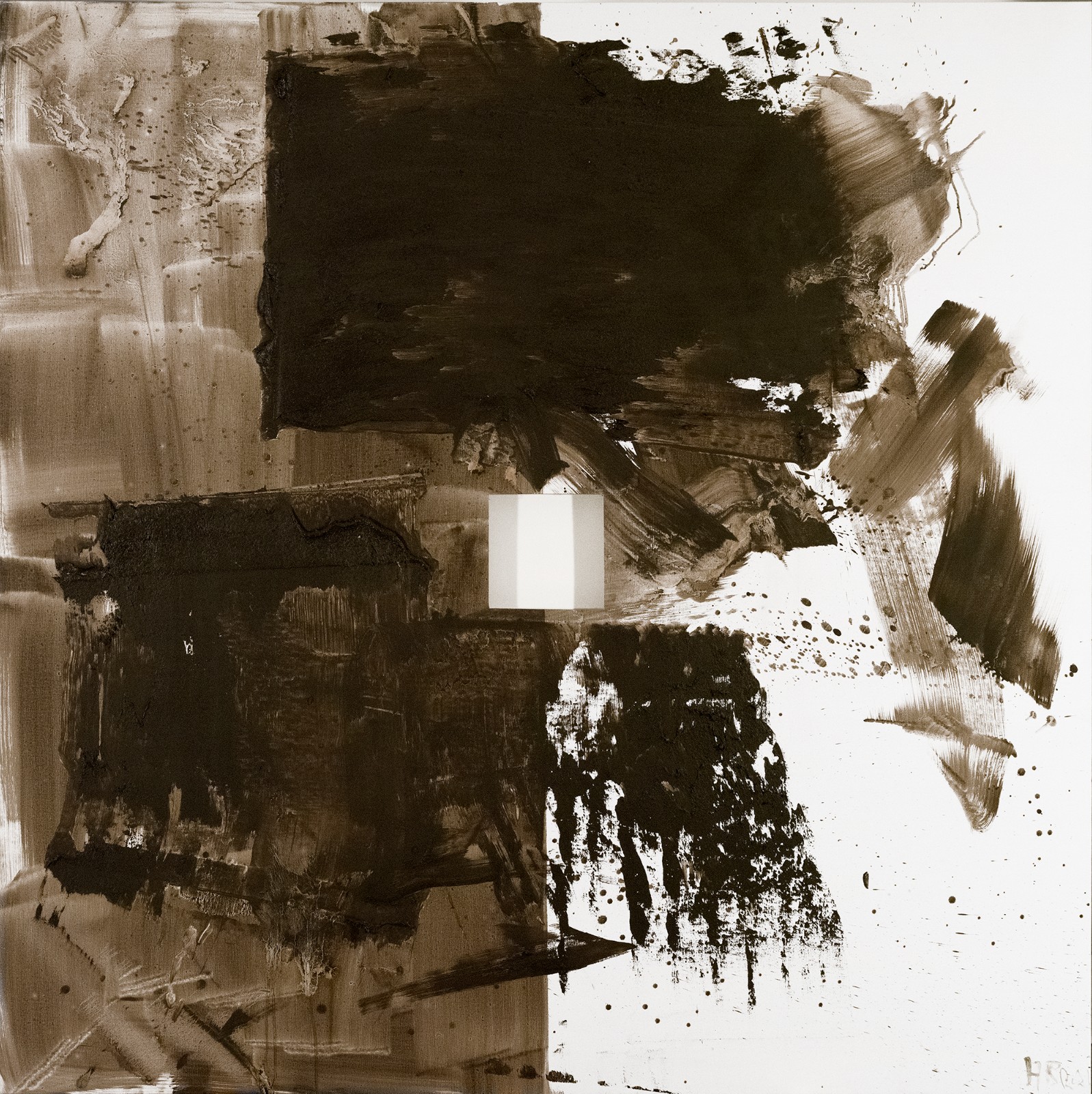
Huang Rui, Earth, 2021, oil and jute on canvas, 200 x 200 cm. Image courtesy of the artist.

Huang Rui, Man, 2021, oil and jute on canvas, 200 x 200 cm. Image courtesy of the artist.
The issue of space runs through Huang Rui’s entire history of abstract paintings, which can be traced back to his continuous interest in traditional texts such as Tao Te Ching and Book of Changes since 1983. He regards the logic contained in Book of Changes as “observing the world/the world looks at you/the interaction between you and the world.” When this traditional Chinese thought meets Japanese traditional space aesthetics and Gutai group’s avant-garde artistic concepts, there is an interesting interaction. During Huang Rui’s stay in Japan, he used the penetrating effect of ink and wash on rice paper and used the back side of the paper as part of his performance. This emphasis on the quality of material is also typical of Gutai group. In his exhibition in Japan, Huang Rui showed his large-scale ink paintings in the exhibition hall by hanging them, which did not change the physical nature of the painting itself, but it also affected the relationship among the work, people and space.

Huang Rui, View of Heaven, 2021, oil and jute on canvas, 250 x 400 cm. Image courtesy of the artist.
Huang Rui, View of Earth, 2021, oil and jute on canvas, 250 x 400 cm. Image courtesy of the artist.
The names of the hexagrams in the Book of Changes contain transitions and changes, and this continuous change is also one of the key concepts of Huang Rui’s creation. In 2020, Huang Rui began to try to find more flexible and more freehand abstract expressions in “Dao”, and created the series of oil paintings the “Inside-out Dao”(2020). Large-scale oil paintings in minimalist tones, thick oil paints form a rough three-dimensional picture texture, and over-diluted oil paints create a blooming effect of ink flowing. In his new works such as View of Heaven, View of Earth, Moonwatching in the Stone Courtyard, and “Heaven, Earth, and People” series of paintings, Huang Rui has integrated elements from previous works to re-express his thinking on the traditional view of the universe. The appearance of calligraphy within the work is mixed with the oil paint of broken jute, which increases the uncontrollable nature of the material experiment. The geometric figures on the canvas have the traces of Western modern art. Huang Rui’s attention to space also extends from the interaction between the work and the exterior of the design of the exhibition hall itself—a special way of viewing View of Heaven and View of Earth is from the opposite exhibition halls, moving back and forth between the division of a wall. In this movement, we, as spectators, actively constructed a space “between heaven and earth.”

Huang Rui, Thirty-Six Stratagems, 1994, steel plate, size variable x 36
Returning to the beginning of the exhibition, Huang Rui’s research on Eastern traditional thought and abstract language has also been extended to the field of installation art, in which the influence of Mono-ha (School of Things) can also be seen. Two installations, old and new, one uses minimally processed steel materials to reproduce the concepts in Thirty-Six Stratagem, and the other focuses on the current pandemic and examines the relationship between man, city, and nature in the form of Eight Diagrams and Five Elements from a global perspective. Under the rusty steel, space debris from another city—or at least imaginative space debris—is preserved. This imagination includes cities, distance and the fear of disease in the pandemic. Since the era of “Stars”, Huang Rui has never been divorced from reality. He runs through the abstract language and space theme in his art and always points to the young man at that time: pursuing the ideal of independence and freedom in art.
Text by Luo Yifei, ed. and trans. by Sue/CAFA ART INFO
Photo Courtesy UCCA Center for Contemporary Art

About the exhibition
Dates: 2021.9.25 - 2021.12.19
Venue: UCCA Beijing
Address: 798, No. 4 Jiuxianqiao Street, Beijing



